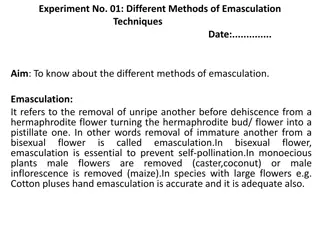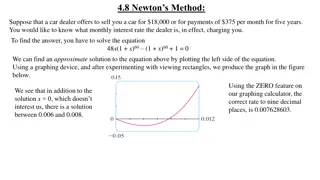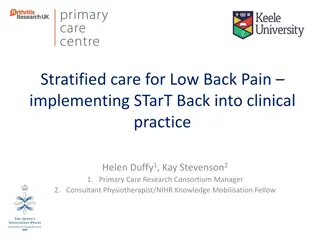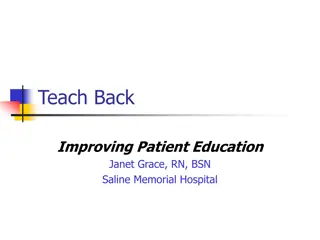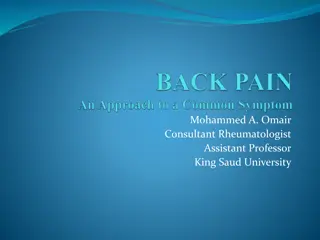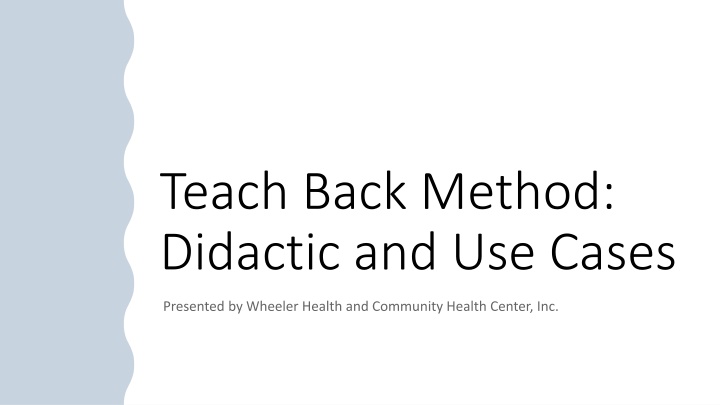
Teach Back Method: Implementing Effective Communication in Healthcare
Discover the Teach Back Method, a powerful communication strategy in healthcare. Learn how to implement this method effectively for better patient outcomes and engagement. Explore use cases and step-by-step guidelines for successful integration.
Uploaded on | 4 Views
Download Presentation

Please find below an Image/Link to download the presentation.
The content on the website is provided AS IS for your information and personal use only. It may not be sold, licensed, or shared on other websites without obtaining consent from the author. If you encounter any issues during the download, it is possible that the publisher has removed the file from their server.
You are allowed to download the files provided on this website for personal or commercial use, subject to the condition that they are used lawfully. All files are the property of their respective owners.
The content on the website is provided AS IS for your information and personal use only. It may not be sold, licensed, or shared on other websites without obtaining consent from the author.
E N D
Presentation Transcript
Teach Back Method: Didactic and Use Cases
Background on Teach Back Method
Steps to Implementation Step 3: Strategize on how and when teach- back will be used and then begin implementing Step 1: Obtain leadership buy in and identify a champion Step 2: Train all team members on the teach- back method Step 4: Inform patients and families that teach- back is being used in your practice and explain its importance Step 5: Evaluate the implementation of teach-back and refine your process Teachback_ACTION III_v13.4 (ahrq.gov) Teachback_ACTION III_v13.4 (ahrq.gov) Teachback_ACTION III_v13.4 (ahrq.gov)
Use Case: All of Us Research Program
Teach Back with AOURP Participants
Teach Back at Wheeler Health: In the Community
How Community Health Workers can Implement Teach Back
1. Appointment Reminder Do not use Yes/No: Do you have your follow up with the doctor scheduled? Instead Use: Teach Back method: Please tell me when your next appointment is with your doctor? Community Health Worker Examples 2) Non-Emergency Transportation Explained how to call for booking transportation appointments, ask the client show me and provide a cheat sheet for futures reference.
Teach Back Method: Front Desk Start of Appointment End of Appointment Reinforcement of the type of upcoming appointment, date, and time Helping patients understand provider availability Reinforcing that patients understand who their internal referral provider is, and where the provider will be located Education on what Wheeler can provide Verifying ID and demographics Education on screening tools like PHQ9 and SBIRT Payment options
Teach Back Method: Medical Assistant (MA) Driven MA s are the first person the patient sees and start the teach back process. Educate patients on the importance of gathering vitals and what they mean. Educate patients on their diagnostic studies and have them teach back what the diagnostic study is for. MA s educate patients on the importance of following up on these studies. MA s teach patients how to advocate if they don t hear back for an appointment or don t get a call on the results.
Teach Back Method: Provider Driven Providers reinforce and reevaluate any information provided by the MA. Teach back to their providers how they should take their medications. Providers are educating patients in a manner they understand. Teach back to their providers how they should go about getting their diagnostic studies. Patients are asked to teach back to their providers what their diagnosis means. Have patients understand and teach back the importance of a timely f/u depending on their diagnosis. Offer Nurse Visits for additional follow up and education. Teach back to their providers how they can help improve or worsen their diagnosis. Providers have patients teach back how a change in their vital signs can impact their diagnosis. At the close of visit, patient should teach back the treatment plan agreed to in the visit, including any medications and follow ups
Teach Back Method: Nurse Driven Nurses start off asking the patient to go over what they understood from their last appointment. Nurses have patients teach back the importance of medication management. Nurses help clarify any information that the patient was taught and ask the patient to relay that information back until clarity is achieved. Nurses have patients teach back what their lab results mean and how they correlate to their diagnosis. Nurses have patients teach back medication administration times. At the close of visit, patient should teach back the treatment plan agreed to in the visit, including any medications and follow ups Nurses have patients teach back medication usage methods. As the primary contact between the patient and provider, nurses reassure patients that we are her for them!
Scenario 4: Community Health Worker CHW shares with the Community Member the services available at Wheeler including Primary Care and Pediatrics. CHW shares that labs can be draw and prescriptions can be filled all in the same building as the doctor s appointment. CHW shares the Navigation phone number where client can book appointments and gives client the address of the Health and Wellness Center. CHW is sure to communicate using plain and simple language. CHW is bilingual in both English and Spanish and makes every attempt to be sure that client is being spoken to in a language they understand well.
Scenario 5: Primary Care Visit Client has recently been diagnosed with High Blood Pressure and is attending an appointment with their Primary Care Physician. Medical Assistant rooms the client and confirms that client is present for an ED follow up where they were diagnosed with High Blood Pressure. Medical Assistant takes the client s blood pressure and gives client the reading, explaining that the provider will be discussing that with them at today s visit. Provider meets with client and discusses what High Blood Pressure is the health concerns associated with this. Provider prescribes a daily medication and explains some side effects that are normal as well as some things to watch out for are not. Providers tells client to schedule a follow up in 2 weeks.
References Guide to Improving Patient Safety in Primary Care Settings by Engaging Patients and Families. Content last reviewed September 2020. Agency for Healthcare Research and Quality, Rockville, MD. https://www.ahrq.gov/patient-safety/reports/engage/teachback.html



![❤[PDF]⚡ Escaping from Eden: Does Genesis Teach that the Human Race was Created](/thumb/21697/pdf-escaping-from-eden-does-genesis-teach-that-the-human-race-was-created.jpg)





